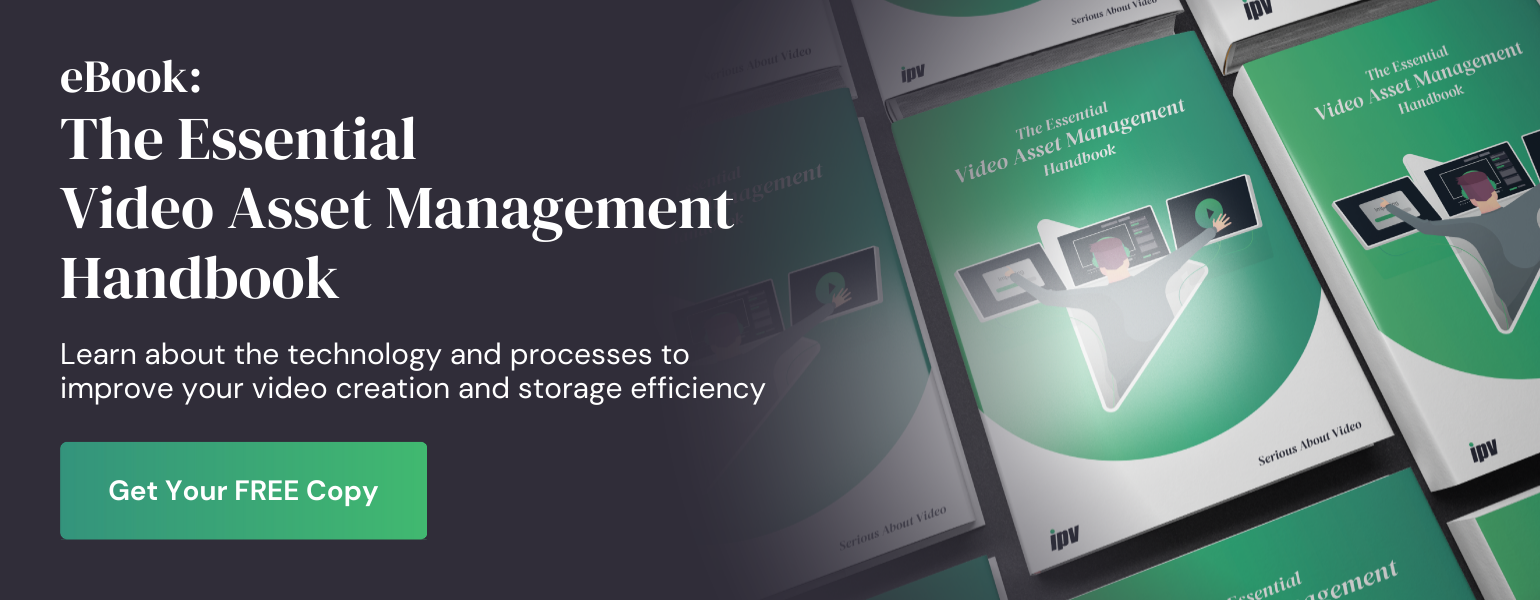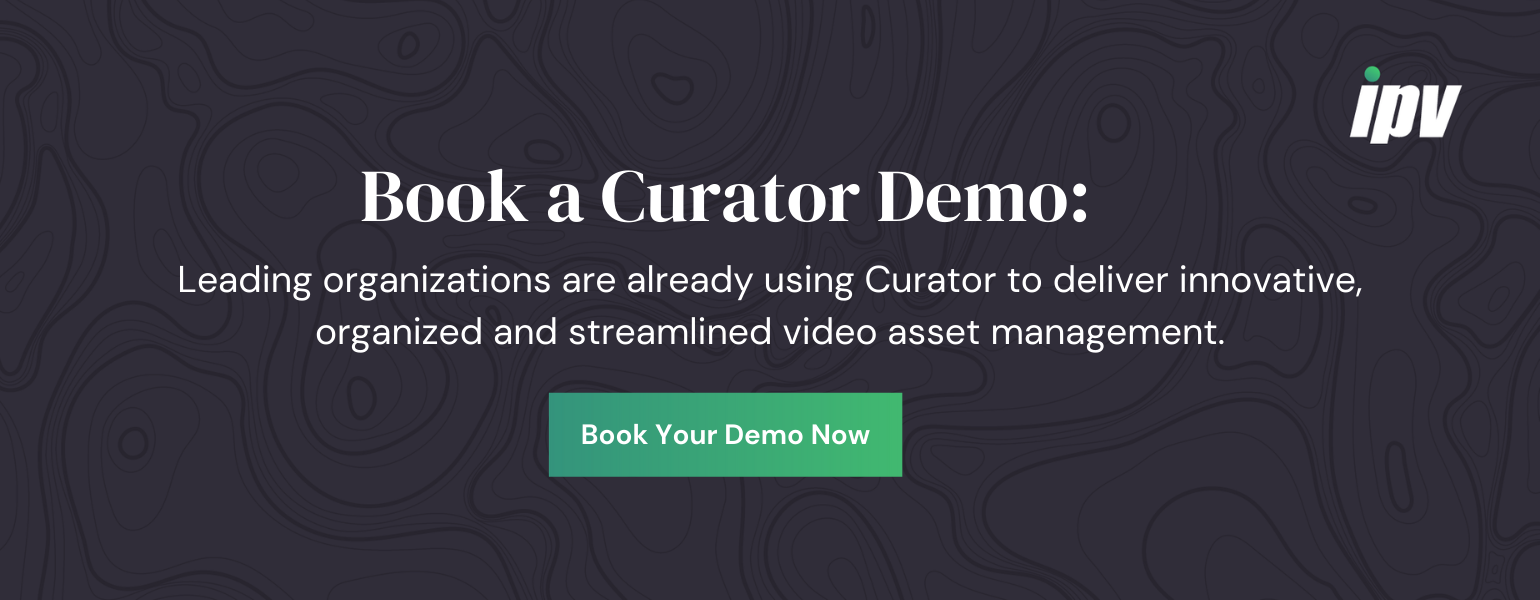.jpg)
The future is video. And for creators and consumers of video content, the future is bright… Or at least it has the capacity to be. After all, video content is a huge growth market that’s ripe with opportunity for creators, educators and digital marketers alike.
Video content is projected to make up 82% of all internet traffic within the next two years. For many, it's the preferred way to tell stories, deliver information, grab the attention of audiences and connect brands with consumers.
In an age where most of us access the internet through mobile devices in brief, stolen moments throughout our busy day, video lends itself much better to our lifestyle and media consumption habits than long-form written content. More creators rush to produce a plethora of cutting edge video content, but this creates its own set of challenges. This is where Video Asset Management (VAM) and object recognition come in.
VAM software solutions can help you to effectively store, access and utilize your video content, so your workflows become more efficient. Object recognition has many uses, but one of the main benefits that it aims to deliver is more automated metadata or very detailed metadata without the overhead of loggers adding it. It also provides true visibility over archived and existing production material.
In this article, we explore exactly what VAM is, why it’s such a fast-growing and important discipline, and how VAM and object recognition can improve your video content production.
What is Video Asset Management?
Video Asset Management (VAM) is a tool used to help in the management of video assets and assist production teams in streamlining production workflows when creating video content.
VAM platforms can provide basic video production tools such as the ability to collect basic metadata and tracking features which can catalog your assets efficiently. More advanced platforms can even integrate with the editing tools you’re using so you don’t have to keep switching between different applications when looking for clips and editing your media.
Not only do these tools help you to create video content more quickly (thereby creating more value for your organization) but they also make collaboration and automation easier. Some VAM platforms have more advanced features, such as the ability to automate your metadata, so all of your content is tagged quickly and efficiently, as well as the ability to remotely edit so you can collaborate in real-time.
Utilizing these features can ensure you’re making the most of the already existing content in your archives and make sure you have the capabilities to effectively create cutting edge video content that will put you ahead of the competition.
What is object recognition?
Perhaps the best way to explain object recognition is by example.Imagine you’re an editor and you’ve been told to cut a second from a particular moment in a video file. With a VAM platform, you can access the file wherever you are but, unfortunately, you don’t have a timestamp for the specific moment. However, you do know that the scene you’re looking for contains a cat jumping onto a sofa… you just have no idea where it comes up in the file.
The new generations of VAM platforms allow you to search the video file using metatags such as “cat” and/or “sofa” as easily as you could search for a particular word in a document using the familiar “CTRL + F” function.
You don’t need to waste time trawling through the video file to get to the right moment. Instead, you can access it quickly and easily, make the change through the cloud and ensure that the amended footage is quickly pushed to whatever OTT platform you’re using.
What are the practical applications of VAM and object recognition today?
It’s easy to see how object recognition has the potential to revolutionize the way in which creators manage their digital assets. It empowers creators and puts them in the driving seat with the ability to access and interrogate even substantial video files remotely through the cloud. Object recognition can help creators get quick access to specific scenes and images by parsing object metadata to get easy access to the data they need. This can be an inanimate object, an animal or even a specific person as face recognition becomes more ubiquitous.
Here are some practical applications for object recognition in VAM:
Add metadata during your ingest workflow
In the video age, more than ever, content is still king. And as creators create and archive more and more video data, an effective workflow is needed to ensure efficient data and metadata ingest.
This means cataloging, encoding, indexing, linking, testing and deploying files efficiently for an efficient ingest workflow. VAM platforms make ingest automation easy while also using object detection to augment metadata at the point of ingest. This means fast and accurate searchability is baked into the crust of ingested video.
Effective transparency and searchability for video ingested with this tech
Not only do VAM platforms make for quicker and easier ingesting, they also ensure that all ingested files combine to form a comprehensively indexed and readily searchable video repository that is available at any time. Alternatively, these ingested files can be placed within a video archive that can be accessed at a later date. This means that no matter how huge users’ video repositories get, they’ll still be quick and straightforward to look through remotely.
Object recognition can also be applied after ingest too. This means you can run your existing archive through it without needing to re-ingest content. Users can enjoy archive transparency and searchability like never before and are able to pinpoint a single moment in hundreds of hours worth of data.

Archive repurposing
Because ingested files have comprehensive metadata woven into their fabric, creators have faster and simpler access to their archives than ever. This makes the repurposing of archive footage a breeze! Why go to the trouble of creating a new piece of video content when you can simply repurpose existing footage from your archives?
In this way, VAM can drastically improve operational efficiency for organizations that need to keep up a steady stream of video content and don’t have time to waste trawling through archives using less efficient means.
Branding
Brand endorsement is an integral revenue stream for everyone from sports broadcasters to film producers. Object recognition allows for the easy tracking of brand logos and how much screen time is allotted to different brands with a vested interest in your content. Therefore, object recognition can be used to deliver timely and accurate visibility statistics so that they know they’re getting sufficient exposure to match their investment.
Some broadcasters are already making SLA (service level agreement) commitments to sponsors which guarantee certain amounts of screen time, and using object detection can take the legwork out of making good on your commitments to sponsors.
Profanity
It’s easy to think of objects in purely visual terms. However, object recognition can also mean voice recognition to ensure that objectionable words and phrases never slip through the net. Object recognition can be used to target spoken or written profanity as well as profane images. This helps ensure that content is consistent with family-friendly policies and avoids fines and other reprisals.
Celebrity recognition
If you need to find certain people within a video, such as celebrities, object recognition can use facial recognition technology to help you pinpoint these people of interest. This means there’s no need to examine hours worth of material to find the people you want to point out — it’s all easily searchable and you can create the content you need to capture your audience’s attention easily and efficiently.
Fast responsiveness
Errors or inaccuracies in your video content can be damaging to your reputation. But when video content has already been uploaded to an OTT platform, it can be difficult and time-consuming to respond and rectify issues in a timely manner.
Or at least… it was. With VAM and object recognition functionality, changes can be made immediately and remotely from virtually anywhere. This means mistakes can be fixed and changes can be made quickly, making production workflows more efficient. There’s no longer any need to waste hours going through existing material because object recognition and metadata tagging means everything is easy to find. Everything is right there for you, so you can focus on creating high-quality content without worrying about the tools you’re using.
More efficient processes, more output
Because the process of metadata tagging (whether during and after ingest) is made easier and more efficient, creatives are free to spend more time doing the fun and rewarding part… creating! This means more output which in turn means better visibility.
What does the future hold for object recognition and video asset management?
The technology that facilitates VAM platforms and their useful, value-adding integrations like object recognition are still relatively young. However, it’s evolving at an exponential rate in order to meet the needs of fast-growing digital video markets.
As VAM and its functionalities, like object recognition, become more ubiquitous and sophisticated, the future of video may well become much brighter. With complete transparency and searchability, makers of video content will be able to make their workflow more efficient, make fast and responsive changes, get easier access to their archives, and remove inaccurate or inappropriate content quickly. Take advantage of VAM platforms so you can create cutting edge media content and ensure you’re staying ahead of your competitors.

Speak Your Mind